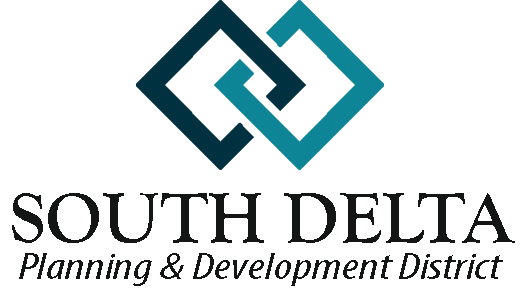Summary Background
EMPLOYMENT & LABOR FORCE
The district’s labor force steadily declined from 66,811 in 1960 to 57,565 in 1970, rebounded in 1980 to 60,865 continued upward in 1990 to 64,030 and has fallen drastically to 55,624 in 2010 and even farther to 35,910 in January, 2023, according to the Mississippi Department of Employment Security. The 2017 district labor force was 42,720 of which 39,548 were employed. The June 2018 District labor force, according to the Mississippi Department of Employment Security, was 43,000 of which 39,460 were employed. The January, 2023 labor force number was 35,910 of which 34,060 were employed. The unemployment rate for the period was 5.2%. The January, 2023 unemployment rate gives the appearance that things are improving by showing that there is a larger percentage of the labor force employed and that the region is not as
far behind the state and nation as seen previously. However, that is a higher percentage of a much smaller number of labor force participants.
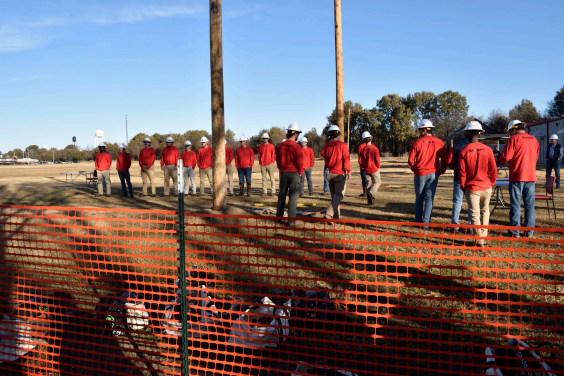
At one time the major draw for companies to come to the Delta was a large labor pool that would work for low wages. That is no longer the case. Out migration and lower labor force participation rates have reflected a change in the attitude of the area’s labor pool. Many of the working age population are no longer willing to remain in situations of underemployment and have chosen to take steps to improve their situation by moving to areas with better opportunities or leaving the labor pool altogether.
In an effort to bring better, higher paying job opportunities to the area, the ACT WorkKeys National Career Readiness Certificate program was implemented throughout the 6 South Delta counties as well as the surrounding 8 workforce counties. This program put the labor pool on an equal footing with the entire nation. Employers could no longer look to the Mississippi Delta for a plentiful and cheap labor pool. The most recent ACT Certificate numbers are proof that when it comes to a useful, trainable workforce, the region can hold its own.
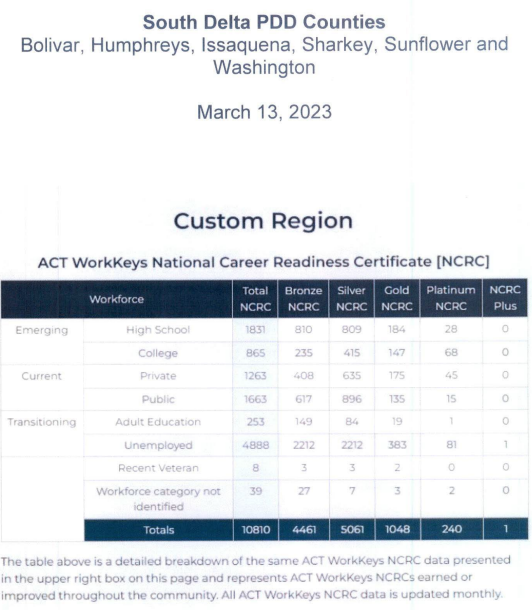
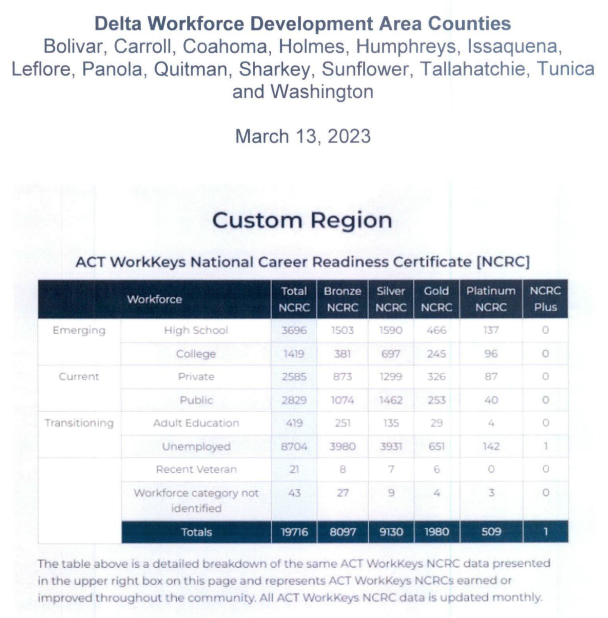
As noted in the previous tables indicating the number of people in the region with ACT NCRC certificates, the single highest category in each table is the Silver Certificate. This means that the majority of the Delta workforce can perform at a skill level equal to a silver certificate holder any where else in the country. The region no longer has to rely on the industries that need high volume, low income/low brainpower to bring employment to the area. Industrial recruitment can now focus on companies that need more skill and trainability. Recruitment of these types of industries can be a huge help in arresting and reversing the outmigration trend.
One component of this is a workforce that improves and advances with time and technology. To this end the district is the fiscal agent for the Delta Workforce Development Board (DWDB). It provides the administrative functions associated with the Workforce Innovation and Opportunity Act (WIOA). Six South Delta staff members currently provide support to the Board and coordinate workforce programs and activities in the 14-county workforce area.
In accordance with the Workforce Innovation and Opportunity Act, it is the purpose of the Delta Workforce Development Board to provide workforce activities in the local area that 21 will increase the employment, retention and earnings of participants and increase occupational skills attainment by participants, and, as a result, improve the quality of the workforce, reduce welfare dependency and enhance the productivity and competitiveness of the fourteen counties which constitute the Delta Workforce Development Area (DWDA).
In FY’07, the DWDA was awarded $10 million to serve DWDA eligible adults, dislocated workers and youth, since then the awards have steadily decreased, yet the need continues to increase as the Region, State and Nation fall farther behind the rest of the world in the ultracompetitive global market. Seven WIN Job Centers (one-stop operators) in the 14 counties provide adult and dislocated worker services. The DWDA focuses a lot of activity on economic development to recruit new businesses and retain existing businesses through On-the-Job Training and Customized Training. DWDA eligible participants are provided services through Individual Training Accounts to help them get a first job or a better job.

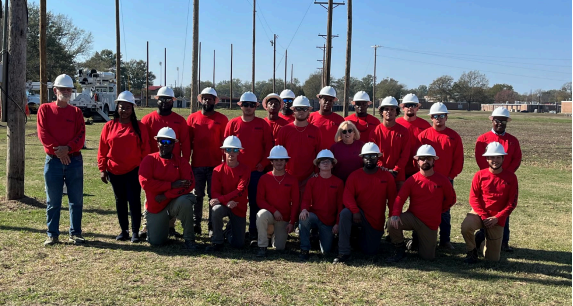
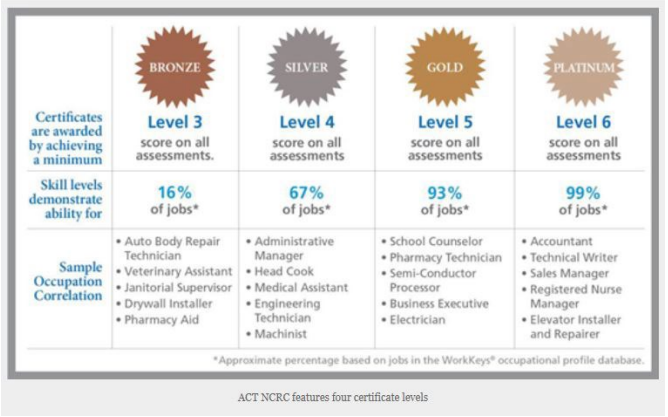
New efforts are underway in the DWDA to focus on sector training initiatives to address local needs. The DWDA will be exploring specific job sectors and will allocate a certain amount of funds to that specific sector. Some areas to be considered include electrical linemen, A & P (aircraft maintenance), health care, hospitality and advanced manufacturing.
These sector initiatives will focus on key industries, promote education and training, provide opportunities for career advancement and create new jobs while building the area’s skilled workforce. These efforts will also help create shared objectives and priorities between public and private partners to leverage new and existing resources.
